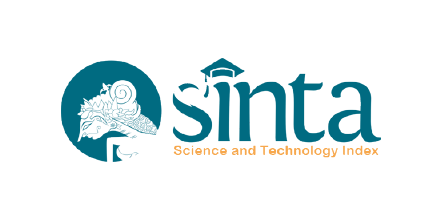Heterogeneity in Anxiety Disorder and Autism Spectrum Disorder: Difference and Overlap
DOI:
https://doi.org/10.21776/ub.ijds.2019.006.02.18Keywords:
heterogeneity, Anxiety Disorder, Autism Spectrum DisorderAbstract
Research on the expression and prevalence of co-occurring anxiety disorders and autism spectrum disorders (ASD) has produced variable results. In part this is due to heterogeneity in the characteristics of the samples, methodology, and the underlying cause of anxiety disorders and ASD across studies. This review will focus on the aspects related to the manifestation of anxiety disorders in children with autism spectrum disorder (ASD), in order to establish the amount of comorbidity or heterogeneity both within and between these disorders. This review will also elaborate on the findings from related studies with reference to the underlying causes of both disorders. A number of typical anxiety symptoms play a significant role characterising autism, creating overlap and heterogeneity in the disorders. Therefore, further research on the measurement of anxiety symptoms in children and adolescents with ASD in addition to the interaction of anxiety and social disability in this population is required, so appropriate treatment and intervention can be established to address each specific characteristic of these disorders.
References
Alkozei, A., Cooper, P. J., & Creswell, C. (2014). Emotional reasoning and anxiety sensitivity: Associations with social anxiety disorder in childhood. Journal of Affective Disorders, 152-154, 219-228. http://doi.org/10.1016/j.jad.2013.09.014.
Amaral, D. G. (2002). The primate amygdala and the neurobiology of social behavior: implications for understanding social anxiety. Biological Psychiatry, 51(1), 11-17. http://doi.org/10.1016/S0006-3223(01)01307.
Amaral, D. G., Bauman, M. D., & Mills Schumann, C. (2003). The amygdala and autism: implications from non-human primate studies. Genes, Brain and Behavior, 2(5), 295-302. http://doi.org/10.1034/j.1601-183X.2003.00043.x.
American Psychiatric Association, & American Psychiatric Association. DSM-5 Task Force. (2013). Diagnostic and statistical manual of mental disorders : DSM-5. (5th ed.). Arlington, Va: American Psychiatric Association.
Anderson, S., & Morris, J. (2006). Cognitive behaviour therapy for people with Asperger syndrome. Behavioural and Cognitive Psychotherapy, 34(03), 293-303.
Arnott, B., McConachie, H., Meins, E., Fernyhough, C., Couteur, A. L., Turner, M., … Leekam, S. (2010). The Frequency of Restricted and Repetitive Behaviors in a Community Sample of 15-Month-Old Infants: Journal of Developmental & Behavioral Pediatrics, 31(3), 223-229. http://doi.org/10.1097/DBP.0b013e3181d5a2ad.
Baker, S. R., & Edelmann, R. J. (2002). Is social phobia related to lack of social skills? Duration of skill-related behaviours and ratings of behavioural adequacy. British Journal of Clinical Psychology, 41(3), 243-257. http://doi.org/10.1348/014466502760379118.
Bejerot, S., Eriksson, J. M., & Mörtberg, E. (2014). Social anxiety in adult autism spectrum disorder. Psychiatry Research, 220(1-2), 705-707. http://doi.org/10.1016/j.psychres.2014.08.030.
Bellini, S. (2006). The Development of Social Anxiety in Adolescents With Autism Spectrum Disorders. Focus on Autism and Other Developmental Disabilities, 21(3), 138-145. http://doi.org/10.1177/10883576060210030201.
Bodfish, J. W., Symons, F. J., Parker, D. E., & Lewis, M. H. (2000). Varieties of Repetitive Behavior in Autism: Comparisons to Mental Retardation. Journal of Autism and Developmental Disorders, 30(3), 237-243. http://doi.org/10.1023/A:1005596502855.
Buitelaar, J. K. (1995). Attachment and Social Withdrawal in Autism: Hypotheses and Findings. Behaviour, 132(5), 319-350. http://doi.org/10.1163/156853995X00595.
Cartwright-Hatton, S., McNicol, K., & Doubleday, E. (2006). Anxiety in a neglected population: Prevalence of anxiety disorders in pre-adolescent children. Clinical Psychology Review, 26(7), 817-833. http://doi.org/10.1016/j.cpr.2005.12.002.
Cervantes, P. E., & Matson, J. L. (2015). The relationship between comorbid psychopathologies, autism, and social skill deficits in young children. Research in Autism Spectrum Disorders, 10, 101-108. http://doi.org/10.1016/j.rasd.2014.11.006.
Cholemkery, H., Mojica, L., Rohrmann, S., Gensthaler, A., & Freitag, C. (2014). Can Autism Spectrum Disorders and Social Anxiety Disorders be Differentiated by the Social Responsiveness Scale in Children and Adolescents? Journal of Autism and Developmental Disorders, 44(5), 1168-1182. http://doi.org/10.1007/s10803-013-1979-4.
Chung, B. H. Y., Drmic, I., Marshall, C. R., Grafodatskaya, D., Carter, M., Fernandez, B. A., … Scherer, S. W. (2011). Phenotypic spectrum associated with duplication of Xp11.22-p11.23 includes Autism Spectrum Disorder. European Journal of Medical Genetics, 54(5), e516-e520. http://doi.org/10.1016/j.ejmg.2011.05.008.
Dadds, M. R., Barrett, P. M., Rapee, R. M., & Ryan, S. (1996). Family process and child anxiety and aggression: An observational analysis. Journal of Abnormal Child Psychology, 24(6), 715-734. http://doi.org/10.1007/BF01664736.
Esbensen, A. J., Seltzer, M. M., Lam, K. S. L., & Bodfish, J. W. (2009). Age-Related Differences in Restricted Repetitive Behaviors in Autism Spectrum Disorders. Journal of Autism and Developmental Disorders, 39(1), 57-66. http://doi.org/10.1007/s10803-008-0599-x.
Esther I de Bruin, R. F. F. (2007). High rates of psychiatric co-morbidity in PDD-NOS. Journal of Autism and Developmental Disorders, 37(5), 877-86. http://doi.org/10.1007/s10803-006-0215-x.
Eussen, M. L., Gool, A. R. V., Verheij, F., Nijs, P. F. D., Verhulst, F. C., & Greaves-Lord, K. (2013). The association of quality of social relations, symptom severity and intelligence with anxiety in children with autism spectrum disorders. Autism, 17(6), 723-735. http://doi.org/10.1177/1362361312453882.
Frick, A., Gingnell, M., Marquand, A. F., Howner, K., Fischer, H., Kristiansson, M., Furmark, T. (2014). Classifying social anxiety disorder using multivoxel pattern analyses of brain function and structure. Behavioural Brain Research, 259, 330-335. http://doi.org/10.1016/j.bbr.2013.11.003.
Gadow, K. D., DeVincent, C. J., Pisarevskaya, V., Olvet, D. M., Xu, W., Mendell, N. R., Hatchwell, E. (2010). Parent's child DRD4 genotype as a potential biomarker for oppositional, anxiety, and repetitive behaviors in children with autism spectrum disorder. Progress in Neuro-Psychopharmacology and Biological Psychiatry, 34(7), 1208–1214. http://doi.org/10.1016/j.pnpbp.2010.06.019.
Gaus, V. L. (2011). Adult Asperger Syndrome and the Utility of Cognitive-Behavioral Therapy. Journal of Contemporary Psychotherapy, 41(1), 47-56. http://doi.org/10.1007/s10879-010-9159-8.
Geschwind, D. H. (2011). Genetics of autism spectrum disorders. Trends in Cognitive Sciences, 15(9), 409-416. http://doi.org/10.1016/j.tics.2011.07.003.
Gross, T. F. (2004). The Perception of Four Basic Emotions in Human and Nonhuman Faces by Children With Autism and Other Developmental Disabilities. Journal of Abnormal Child Psychology, 32(5), 469-480. http://doi.org/10.1023/B:JACP.0000037777.17698.01.
Hallett, V., Lecavalier, L., Sukhodolsky, D. G., Cipriano, N., Aman, M. G., McCracken, J. T., Scahill, L. (2013). Exploring the Manifestations of Anxiety in Children with Autism Spectrum Disorders. Journal of Autism and Developmental Disorders, 43(10), 2341-2352. http://doi.org/10.1007/s10803-013-1775-1.
Helverschou, S. B., & Martinsen, H. (2011). Anxiety in people diagnosed with autism and intellectual disability: Recognition and phenomenology. Research in Autism Spectrum Disorders, 5(1), 377-387. http://doi.org/10.1016/j.rasd.2010.05.003.
Herren, C., In-Albon, T., & Schneider, S. (2013). Beliefs regarding child anxiety and parenting competence in parents of children with separation anxiety disorder. Journal of Behavior Therapy and Experimental Psychiatry, 44(1), 53-60. http://doi.org/10.1016/j.jbtep.2012.07.005.
Ingalhalikar, M., Parker, W. A., Bloy, L., Roberts, T. P. L., & Verma, R. (2014). Creating multimodal predictors using missing data: Classifying and subtyping autism spectrum disorder. Journal of Neuroscience Methods, 235, 1-9. http://doi.org/10.1016/j.jneumeth.2014.06.030.
Kerns, C. M., & Kendall, P. C. (2012). The Presentation and Classification of Anxiety in Autism Spectrum Disorder. Clinical Psychology: Science and Practice, 19(4), 323-347. http://doi.org/10.1111/cpsp.12009
Klin, A. (1991). Young autistic childrenâ's listening preferences in regard to speech: A possible characterization of the symptom of social withdrawal. Journal of Autism and Developmental Disorders, 21(1), 29-42. http://doi.org/10.1007/BF02206995.
Kumar, R. A., KaraMohamed, S., Sudi, J., Conrad, D. F., Brune, C., Badner, J. A., Christian, S. L. (2007). Recurrent 16p11.2 microdeletions in autism. Human Molecular Genetics, 17(4), 628-638. http://doi.org/10.1093/hmg/ddm376.
Kyriakopoulos, M., Stringaris, A., Manolesou, S., Radobuljac, M. D., Jacobs, B., Reichenberg, A., Frangou, S. (2014). Determination of psychosis-related clinical profiles in children with autism spectrum disorders using latent class analysis. European Child & Adolescent Psychiatry, 24(3), 301-307. http://doi.org/10.1007/s00787-014-0576-1.
Libero, L. E., DeRamus, T. P., Lahti, A. C., Deshpande, G., & Kana, R. K. (2015). Multimodal neuroimaging based classification of autism spectrum disorder using anatomical, neurochemical, and white matter correlates. Cortex, 66, 46-59. http://doi.org/10.1016/j.cortex.2015.02.008.
MacNeil, B. M., Lopes, V. A., & Minnes, P. M. (2009). Anxiety in children and adolescents with Autism Spectrum Disorders. Research in Autism Spectrum Disorders, 3(1), 1-21. http://doi.org/10.1016/j.rasd.2008.06.001.
Maddox, B. B., & White, S. W. (2015). Comorbid Social Anxiety Disorder in Adults with Autism Spectrum Disorder. Journal of Autism and Developmental Disorders, 45(12), 3949–3960. http://doi.org/10.1007/s10803-015-2531-5.
McPheeters, M. L., Davis, A., Navarre, J. R., & Scott, T. A. (2011). Family Report of ASD Concomitant with Depression or Anxiety Among US Children. Journal of Autism and Developmental Disorders, 41(5), 646-653. http://doi.org/10.1007/s10803-010-1085-9.
Mellings, T. M. ., & Alden, L. E. (2000). Cognitive processes in social anxiety: the effects of self-focus, rumination and anticipatory processing. Behaviour Research and Therapy, 38(3), 243–257. http://doi.org/10.1016/S0005-7967(99)00040-6.
Modini, M., Abbott, M. J., & Hunt, C. (2015). A Systematic Review of the Psychometric Properties of Trait Social Anxiety Self-Report Measures. Journal of Psychopathology and Behavioral Assessment, 37(4), 645-662. http://doi.org/10.1007/s10862-015-9483-0.
Muehlmann, A. M., & Lewis, M. H. (2012). Abnormal repetitive behaviours: shared phenomenology and pathophysiology: Abnormal repetitive behaviours. Journal of Intellectual Disability Research, 56(5), 427-440. http://doi.org/10.1111/j.1365-2788.2011.01519.x.
Naragon-Gainey, K., & Watson, D. (2011). Clarifying the dispositional basis of social anxiety: A hierarchical perspective. Personality and Individual Differences, 50(7), 926-934. http://doi.org/10.1016/j.paid.2010.07.012.
Nilsson, J.-E., Lundh, L.-G., & Viborg, G. (2012). Imagery rescripting of early memories in social anxiety disorder: An experimental study. Behaviour Research and Therapy, 50(6), 387-392. http://doi.org/10.1016/j.brat.2012.03.004.
O'Toole, M. S., Hougaard, E., & Mennin, D. S. (2013). Social anxiety and emotion knowledge: A meta-analysis. Journal of Anxiety Disorders, 27(1), 98-108. http://doi.org/10.1016/j.janxdis.2012.09.005.
Ozsivadjian, A., & Knott, F. (2011). Anxiety problems in young people with autism spectrum disorder: A case series. Clinical Child Psychology and Psychiatry, 16(2), 203-214. http://doi.org/10.1177/1359104511404749.
Ozsivadjian, A., Knott, F., & Magiati, I. (2012). Parent and child perspectives on the nature of anxiety in children and young people with autism spectrum disorders: a focus group study. Autism, 16(2), 107-121. http://doi.org/10.1177/1362361311431703.
Piven, J., & Palmer, P. (1999). Psychiatric disorder and the broad autism phenotype: evidence from a family study of multiple-incidence autism families. The American Journal of Psychiatry, 156(4), 557-563. http://doi.org/10.1176/ajp.156.4.557
Przeworski, A., Newman, M. G., Pincus, A. L., Kasoff, M. B., Yamasaki, A. S., Castonguay, L. G., & Berlin, K. S. (2011). Interpersonal pathoplasticity in individuals with generalized anxiety disorder. Journal of Abnormal Psychology, 120(2), 286â-298. http://doi.org/10.1037/a0023334.
Rodgers, J., Glod, M., Connolly, B., & McConachie, H. (2012). The Relationship Between Anxiety and Repetitive Behaviours in Autism Spectrum Disorder. Journal of Autism and Developmental Disorders, 42(11), 2404-2409. http://doi.org/10.1007/s10803-012-1531-y.
Rydén, E., & Bejerot, S. (2008). Autism spectrum disorders in an adult psychiatric population. A naturalistic cross-sectional controlled study. Retrieved from http://www.clinicalneuropsychiatry.org/pdf/03_ryden.pdf
Scaini, S., Belotti, R., & Ogliari, A. (2014). Genetic and environmental contributions to social anxiety across different ages: A meta-analytic approach to twin data. Journal of Anxiety Disorders, 28(7), 650-656. http://doi.org/10.1016/j.janxdis.2014.07.002.
Scattone, D., & Mong, M. (2013). Cognitive Behavior Therapy in The Treatment of Anxiety for Adolescents and Adults with Autism Spectrum Disorders: CBT for Autism Spectrum Disorders. Psychology in the Schools, 50(9), 923-935. http://doi.org/10.1002/pits.21717.
Schneider, B. H. (2009). An observational study of the interactions of socially withdrawn/anxious early adolescents and their friends. Journal of Child Psychology and Psychiatry, 50(7), 799-806. http://doi.org/10.1111/j.1469-7610.2008.02056.x.
Schneier, F. R., Rodebaugh, T. L., Blanco, C., Lewin, H., & Liebowitz, M. R. (2011). Fear and avoidance of eye contact in social anxiety disorder. Comprehensive Psychiatry, 52(1), 81-87. http://doi.org/10.1016/j.comppsych.2010.04.006.
Schreier, S.-S., & Heinrichs, N. (2010). Parental fear of negative child evaluation in child social anxiety. Behaviour Research and Therapy, 48(12), 1186-1193. http://doi.org/10.1016/j.brat.2010.09.001.
Seltzer, M. M., Shattuck, P., Abbeduto, L., & Greenberg, J. S. (2010). Trajectory of Development in Adolescents and Adults with Autism. Mental Retardation and Developmental Disabilities Research Reviews, 10(4), 234-247. http://doi.org/10.1002/mrdd.20038.
Shattuck, P., Seltzer, M., Greenberg, J., Orsmond, G., Bolt, D., Kring, S., … Lord, C. (2007). Change in Autism Symptoms and Maladaptive Behaviors in Adolescents and Adults with an Autism Spectrum Disorder. Journal of Autism and Developmental Disorders, 37(9), 1735-1747. http://doi.org/10.1007/s10803-006-0307-7.
Staal, W. G., de Krom, M., & de Jonge, M. V. (2012). Brief Report: The Dopamine-3-Receptor Gene (DRD3) is Associated with Specific Repetitive Behavior in Autism Spectrum Disorder (ASD). Journal of Autism and Developmental Disorders, 42(5), 885-888. http://doi.org/10.1007/s10803-011-1312-z.
Stein, M. B., & Stein, D. J. (2008). Social anxiety disorder. The Lancet, 371(9618), 1115-1125. http://doi.org/10.1016/S0140-6736(08)60488-2.
Sukhodolsky, D. G., Scahill, L., Gadow, K. D., Arnold, L. E., Aman, M. G., McDougle, C. J., … Vitiello, B. (2007). Parent-Rated Anxiety Symptoms in Children with Pervasive Developmental Disorders: Frequency and Association with Core Autism Symptoms and Cognitive Functioning. Journal of Abnormal Child Psychology, 36(1), 117-128. http://doi.org/10.1007/s10802-007-9165-9.
Sung, M., Ooi, Y. P., Goh, T. J., Pathy, P., Fung, D. S. S., Ang, R. P., Lam, C. M. (2011). Effects of Cognitive-Behavioral Therapy on Anxiety in Children with Autism Spectrum Disorders: A Randomized Controlled Trial. Child Psychiatry & Human Development, 42(6), 634-649. http://doi.org/10.1007/s10578-011-0238-1.
Trammell, B., Wilczynski, S. M., Dale, B., & Mcintosh, D. E. (2013). Assessment and Differential Diagnosis of Comorbid Conditions in Adolescents and Adults with Autism Spectrum Disorders. Psychology in the Schools, 50(9), 936-946. http://doi.org/10.1002/pits.21720.
Tyson, K. E., & Cruess, D. G. (2012). Differentiating High-Functioning Autism and Social Phobia. Journal of Autism and Developmental Disorders, 42(7), 1477-1490. http://doi.org/10.1007/s10803-011-1386-7.
Ung, D., Selles, R., Small, B. J., & Storch, E. A. (2015). A Systematic Review and Meta-Analysis of Cognitive-Behavioral Therapy for Anxiety in Youth with High-Functioning Autism Spectrum Disorders. Child Psychiatry & Human Development, 46(4), 533-547. http://doi.org/10.1007/s10578-014-0494-y.
Vasa, R. A., Kalb, L., Mazurek, M., Kanne, S., Freedman, B., Keefer, A., … Murray, D. (2013). Age-related differences in the prevalence and correlates of anxiety in youth with autism spectrum disorders. Research in Autism Spectrum Disorders, 7(11), 1358-1369. http://doi.org/10.1016/j.rasd.2013.07.005.
Watkins, E. R. (2008). Constructive and unconstructive repetitive thought. Psychological Bulletin, 134(2), 163-206. http://doi.org/10.1037/0033-2909.134.2.163.
White, S. W., Kreiser, N. L., Pugliese, C., & Scarpa, A. (2012). Social anxiety mediates the effect of autism spectrum disorder characteristics on hostility in young adults. Autism, 16(5), 453-464. http://doi.org/10.1177/1362361311431951.
White, S. W., & Roberson-Nay, R. (2009). Anxiety, Social Deficits, and Loneliness in Youth with Autism Spectrum Disorders. Journal of Autism and Developmental Disorders, 39(7), 1006-1013. http://doi.org/10.1007/s10803-009-0713-8.
Wolff, J. J., Botteron, K. N., Dager, S. R., Elison, J. T., Estes, A. M., Gu, H., The IBIS Network. (2014). Longitudinal patterns of repetitive behavior in toddlers with autism. Journal of Child Psychology and Psychiatry, 55(8), 945-953. http://doi.org/10.1111/jcpp.12207.
Downloads
Published
How to Cite
Issue
Section
License
Copyright (c) 2019 Ziadatul Hikmiah

This work is licensed under a Creative Commons Attribution-NonCommercial 4.0 International License.















